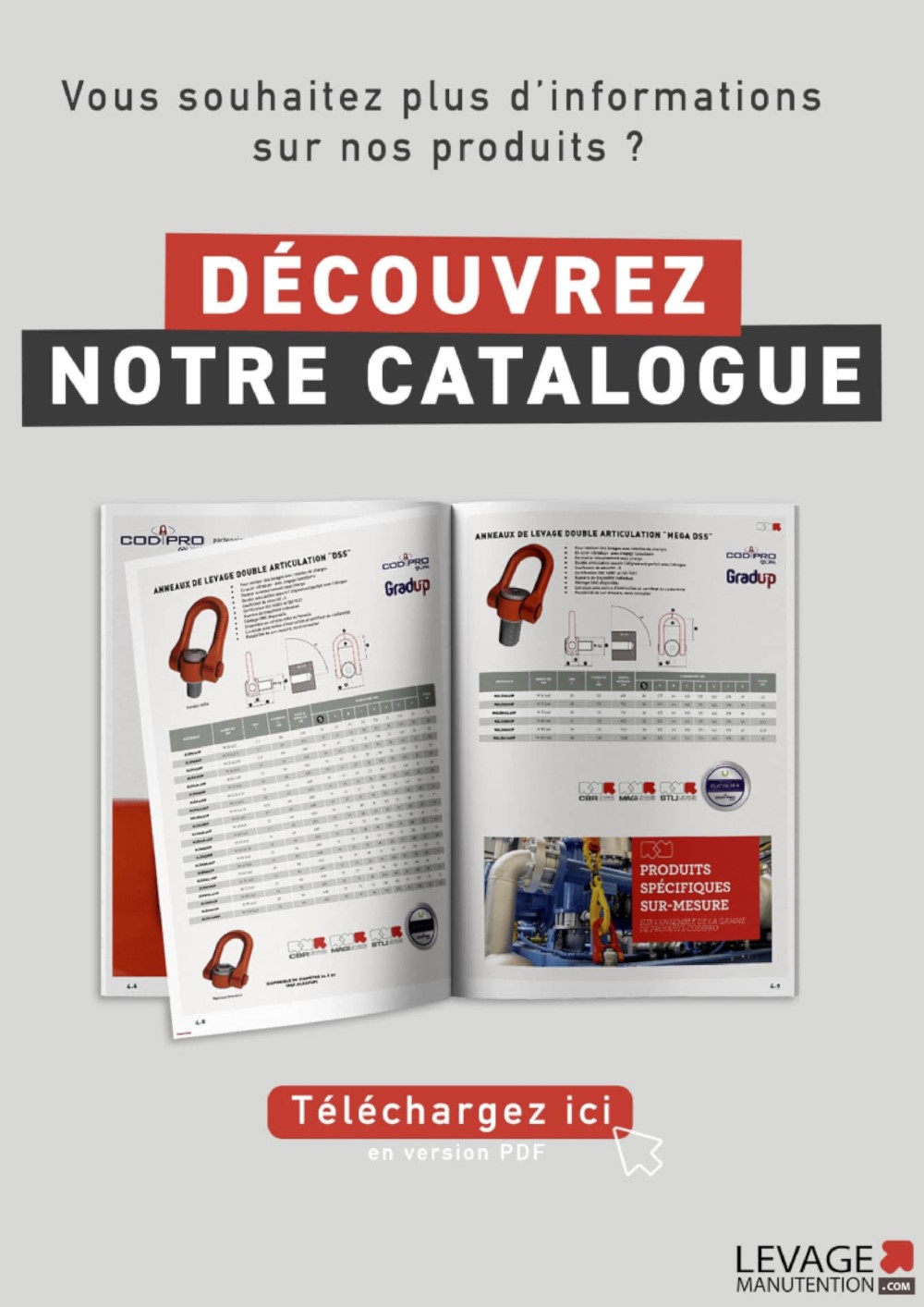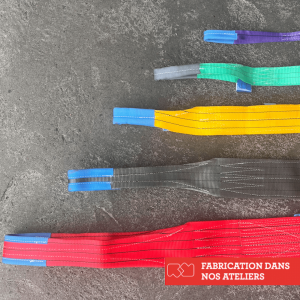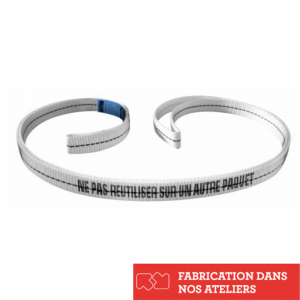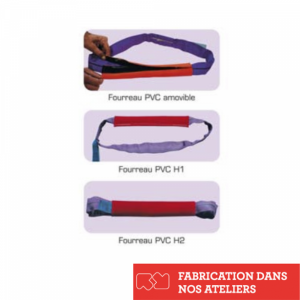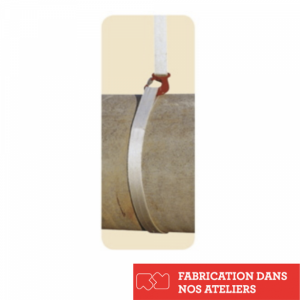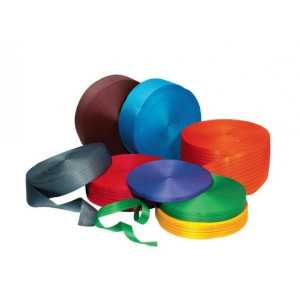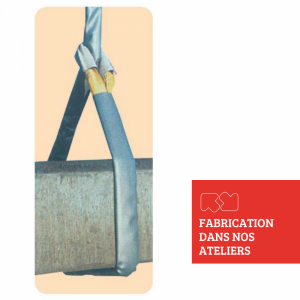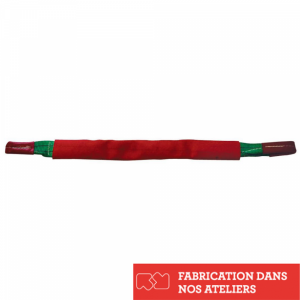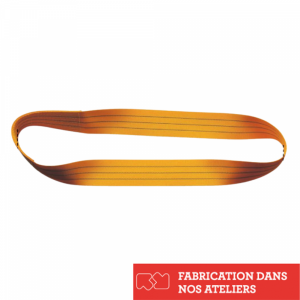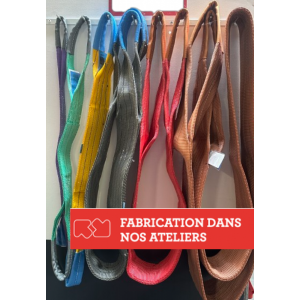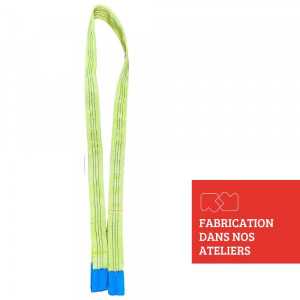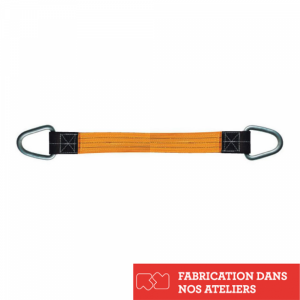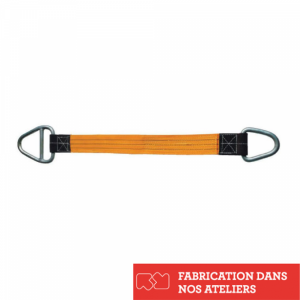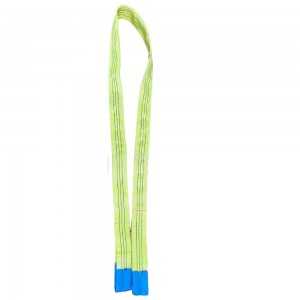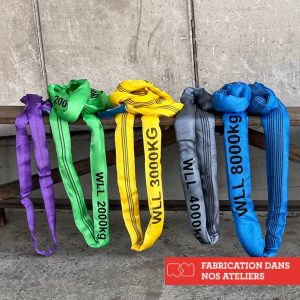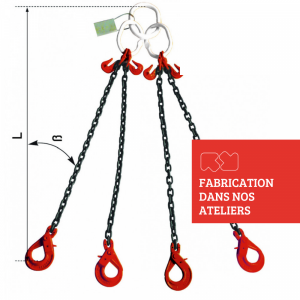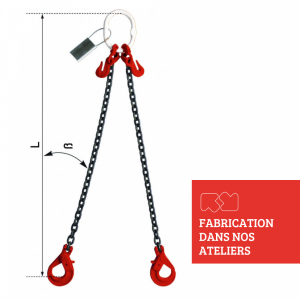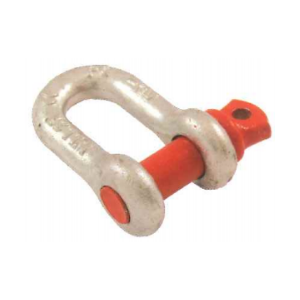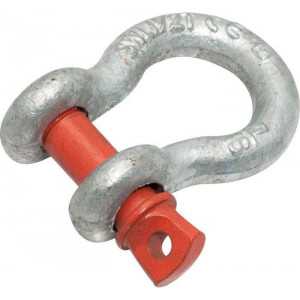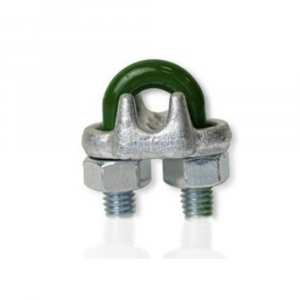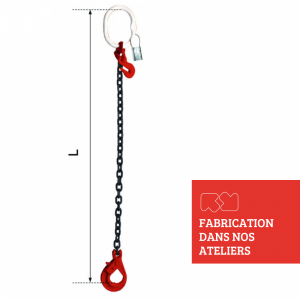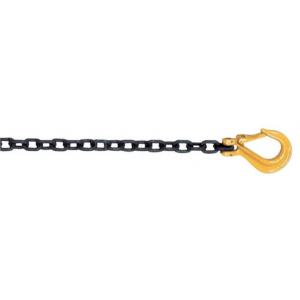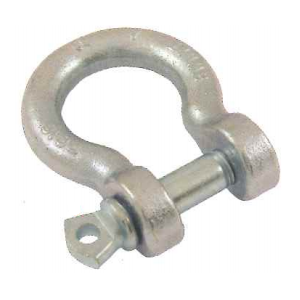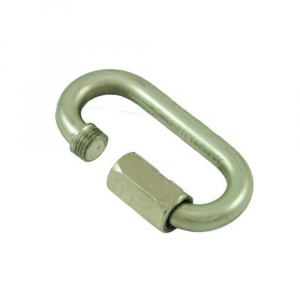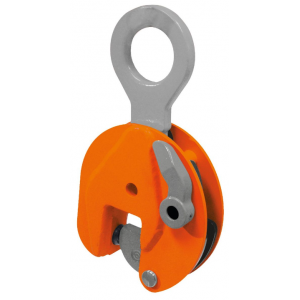FLAT WEBBING SLINGS
Flat woven webbing slings can be combined with slinging accessories (also called sling accessories) to create endings. Flat webbing slings can be sewn together at the ends to form loops or folded back on themselves to create endless flat slings.
All textile slings are sensitive to mechanical damage. You can protect these slings with a protective sheath made of leather, canvas, strong, fabric or any other durable material (PVC, polyurethane).
How to identify a flat sling?
Flat webbing slings can be identified by means of a label sewn onto the sling. The label has a visible part and a hidden part in the overlap of the sheath or strap. The sling label thus identifies the main characteristics of the lifting sling.
To begin with, the colour of the label determines the textile material used: green indicates that it is a polyamide sling, blue indicates that it is a sling made of polyester and brown indicates a polypropylene sling. The visible part of the label must contain elements that are essential for identifying the sling:
- The maximum working load (WLL) in tonnes or kilograms and the corresponding angle range for multi-strand slings.
- The material used to create the sling
- The class of the accessories (buckles...)
- The nominal length of the flat webbing sling in metres
- The name or symbol of the manufacturer
- The tracability code, which identifies the basic manufacturing elements such as the identification of the sling, the manufacturer's control and the accessories
- The number of the harmonised standard
- Mandatory CE marking
Like all textile slings, flat webbing slings have a strap colour corresponding to the associated load capacity. One ton slings have a purple strap, green strap corresponds to 2 ton slings, yellow for 3 ton slings, grey for 4 ton slings, red for 5 ton slings, brown for 6 ton slings, blue for 8 ton slings and finally orange strap for all flat webbing slings over 10 ton.
How to check your flat webbing sling ?
In order to sling safely, it is advisable to carry out a regular visual inspection of flat webbing slings. If you notice any of the following during your visual inspection, the sling should be removed from service.
- If you notice any local deterioration of the sling, as distinct from general wear and tear, please do not use your sling, as this could lead to an accident.
- If you detect a transverse or longitudinal cut, damage to the edges due to cutting or heating, cutting of the seams and loops, then your sling is not suitable for use.
- If your flat webbing sling suffers a chemical attack that causes a weakening or softening of the material; this is distinguished by the flaking of the surface which can be torn off or damaged by friction, then it must be taken out of service.
- Similarly, if the sling suffers heat or friction damage, which is indicated by the satin appearance that the fibres may take on.
- Finally, if the fittings at the ends of the sling are damaged, you should have them checked and repaired by an expert.
- If your sling does not have an identification label, then it is unusable because it does not comply with the applicable laws.
Flat webbing slings are also sensitive to sunlight and ultraviolet rays, which causes the components to deteriorate. Slings that are often exposed to the sun should be given special attention. Please note that some slings may become brittle without changing their appearance.
In order to avoid any risk of accident, Levage Manutention advises you to take into account the information provided by the manufacturer in the manual in order to know the life span and the operating mode of the flat webbing sling.
If you notice any defect or wear on one of your flat webbing slings, our workshops are able to check and repair your slings. Simply contact our customer service department and they will make a quotation for the repair according to your needs.
For any other information on flat webbing slings, please contact our customer service via the contact form or by phone, they will answer all your questions.




